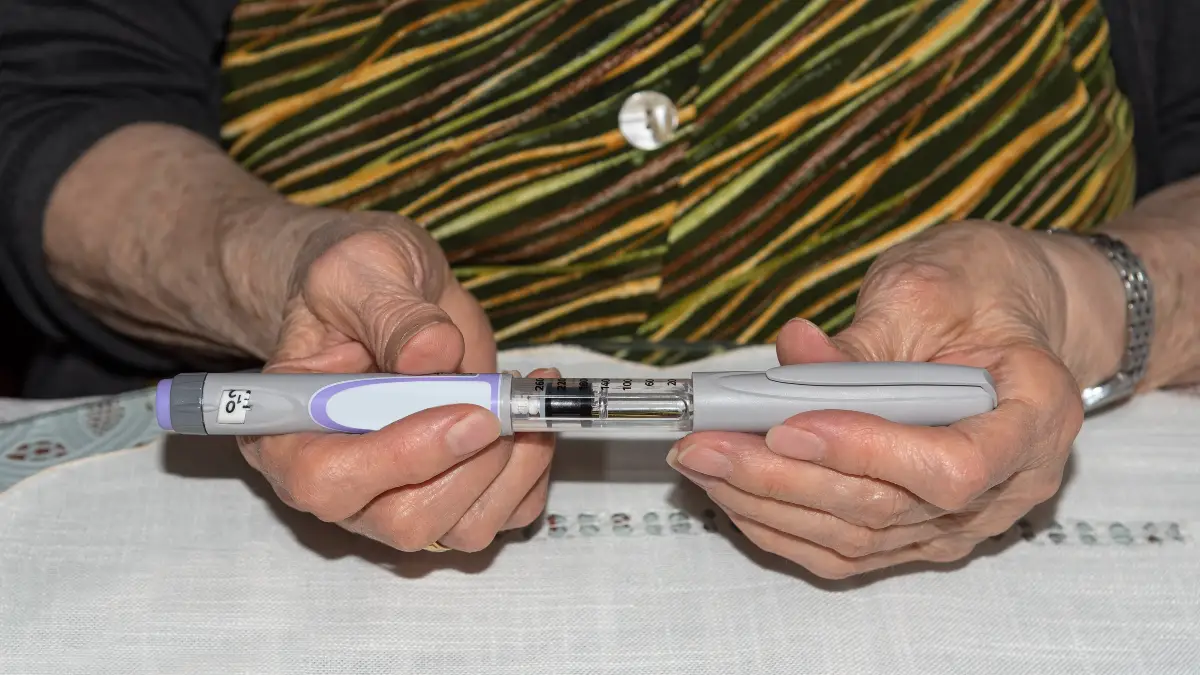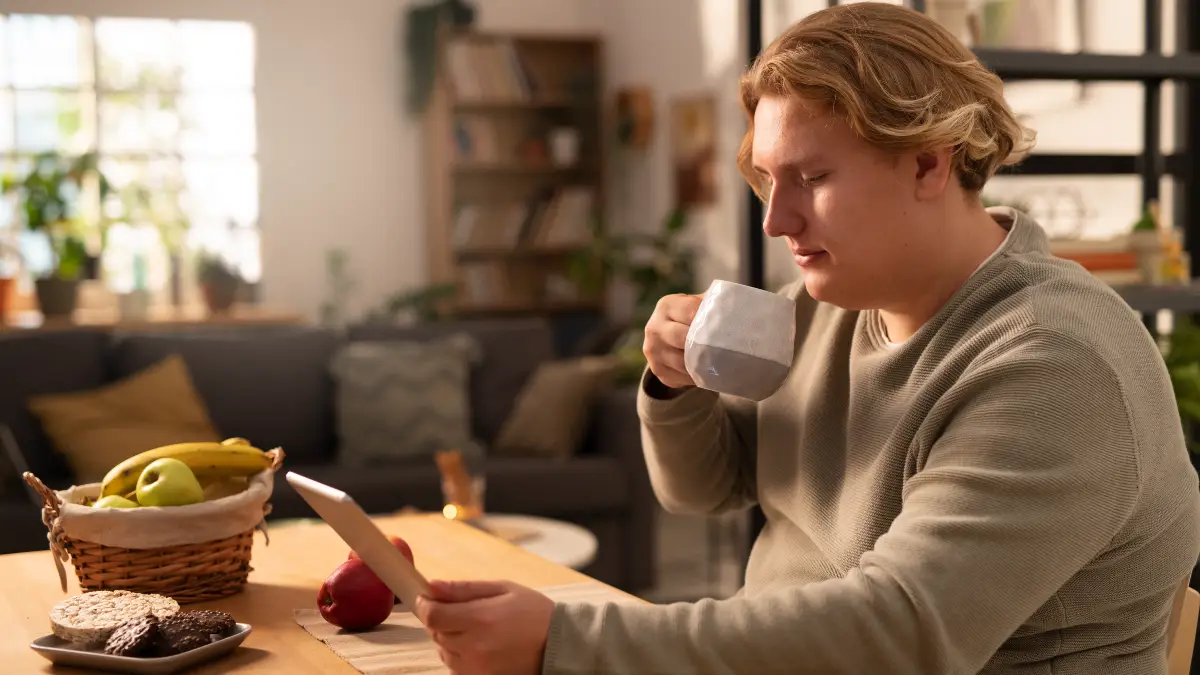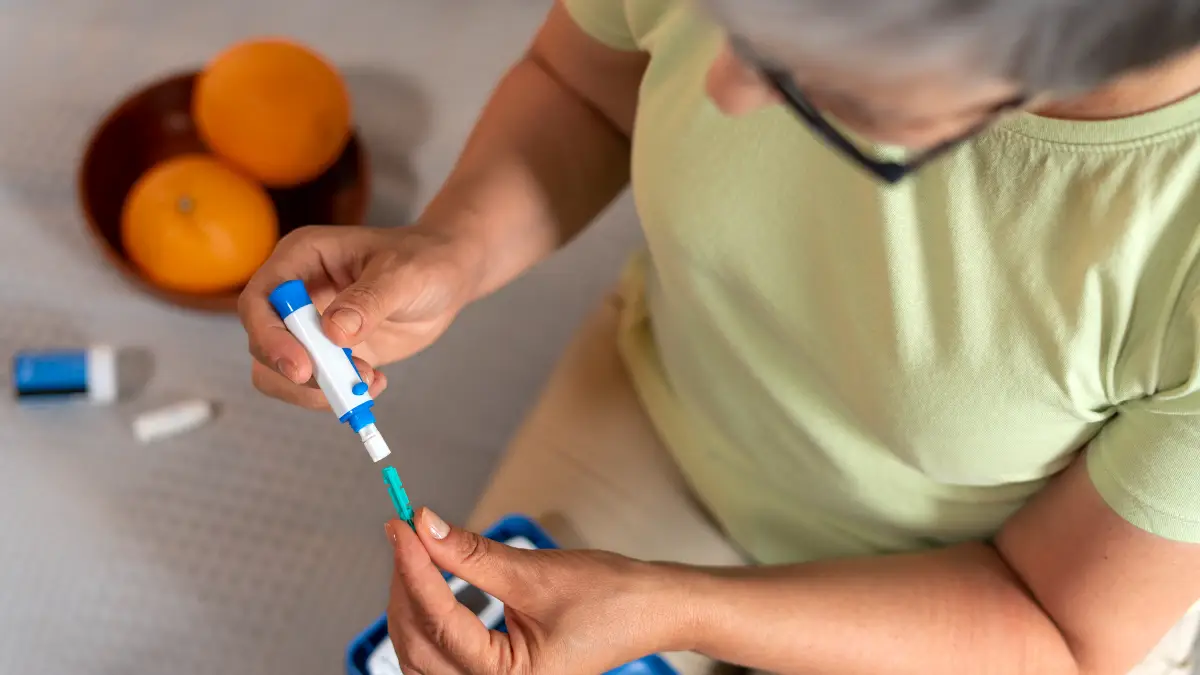You’ve heard the hype about drugs like Ozempic, but the reality is harsh. Metabolic health is a massive problem, with one in nine adults around the world now living with diabetes.
In the U.S., 98 million people have prediabetes, putting them at serious risk. Many look to these new drugs for help, but they come with a steep price tag—nearly $1,000 a month—and a long list of side effects, from stomach pain to pancreatitis.
This guide cuts through the noise. It will show you a powerful, science-backed “Glucose Trick” that uses your body’s own natural system to help you take back control of your blood sugar, without the high cost.
What Is Ozempic and Why Is It So Popular?

To see why natural options are so important, you first need to know why Ozempic is so effective. When you look at how it works, its popularity, and its problems, you’ll see why a free, natural method is a great choice.
How Ozempic Changes Your Metabolism
Ozempic works because it copies a natural hormone in your body called GLP-1. Your gut releases GLP-1 when you eat food, especially carbs, proteins, and fats. This hormone is key for keeping your blood sugar stable. It does three main things:
- It helps your body release insulin. GLP-1 tells your pancreas to release insulin, but only when your blood sugar is high after a meal. This smart system helps stop your blood sugar from dropping too low.
- It lowers glucagon. GLP-1 also tells your pancreas to make less glucagon. Glucagon is a hormone that tells your liver to release stored sugar. By blocking it, GLP-1 helps keep your blood sugar from rising too much, especially between meals.
- It slows down your stomach. GLP-1 makes your stomach empty food more slowly. This means the sugar from your meal gets into your blood at a slower pace, which prevents a big spike in blood sugar after you eat.
The drug in Ozempic, semaglutide, is a GLP-1 receptor agonist. It’s a man-made molecule that acts just like your natural GLP-1, but it’s much stronger. Your body’s GLP-1 only lasts for a few minutes. Semaglutide lasts for about seven days.
This long-lasting effect is what makes the drug so good at lowering blood sugar. It also makes you feel less hungry and helps with weight loss.
Why Ozempic Isn’t for Everyone
The success of drugs like Ozempic has made them incredibly popular. From 2018 to 2023, the number of people using them grew by almost five times. In 2023, people in the U.S. spent more money on semaglutide than any other drug.
But this huge demand comes with two big problems: cost and side effects.
First, the price is very high. The list price for a month of Ozempic is $997.58. Insurance might cover it for type 2 diabetes, but it often won’t for weight loss. Less than 1% of users pay the full price themselves, which shows that it’s just too expensive for most people without insurance.
Second, the side effects can be tough. The official drug information lists many problems:
- Common Side Effects: Many users have stomach issues. Studies show over 48% of people on Ozempic have at least one side effect. Nausea is the most common, hitting almost 37% of users. Vomiting, diarrhea, stomach pain, and constipation are also frequent.
- Serious Risks: Though less common, there are more serious risks. These include pancreatitis (a painful inflammation of the pancreas), vision changes, low blood sugar, kidney injury, and gallbladder problems. The drug also has a warning about a possible risk of thyroid tumors.
The very thing that makes Ozempic work is also what causes its most common side effects. The drug slows down your stomach a lot, which helps with blood sugar and appetite.
But it’s also the direct reason for the nausea and vomiting that make some people stop taking it. To get the best results from the drug, you often have to put up with feeling sick.
Finally, you may have to take it forever. For many, Ozempic isn’t a cure. It’s a long-term treatment. When people stop taking the drug, their appetite often comes back and they regain the weight they lost.
This shows why it’s so important to have sustainable lifestyle habits that you can stick with for the long run.
The Glucose Trick: How to Use Your Body’s Natural Ozempic

Since the drug has its limits, finding a natural way to get the same effects is a big deal. This method is backed by solid science. It’s not about what you eat, but the order in which you eat it.
The “Trick” Explained: Change the Order of Your Food
The best free, science-backed trick to manage your blood sugar after a meal is called meal sequencing. The rule is simple: eat your food in a specific order. 1. Veggies with fiber first, 2. Protein and fats second, and 3. Starches and sugars last.
This idea has been made popular by people like biochemist Jessie Inchauspé (“Glucose Goddess”), but it’s not a new trend. It’s a real scientific principle that has been studied for years.
The science behind meal sequencing is what connects it to drugs like Ozempic. Studies show that eating protein or fat before carbs makes your gut release the GLP-1 hormone.
This is the same hormone Ozempic copies. The fiber, protein, and fat you eat first also slow down how fast your stomach empties. This blunts the sugar spike from the carbs you eat last.
By simply changing the order of your food, you tell your body to release the very hormone that Ozempic provides.
What the Science Says About Meal Sequencing
The effects of meal sequencing aren’t just a theory. They have been measured in clinical trials. Research from Weill Cornell Medicine gives strong proof that this trick works.17
A key study from 2020 looked at people with prediabetes. They ate the exact same meal on three different days, just in a different order.
When they ate protein and vegetables 10 minutes before carbs, the results were amazing compared to when they ate carbs first:
- The blood sugar spike after the meal was cut by over 40%.
- The total glucose the body was exposed to over three hours was 38.8% lower.
- The body also released less insulin, which means less stress on the pancreas.
These results are a big deal because the meal was the same every time. The calories and foods were identical. This proves that the order you eat, not just what you eat, caused these huge health improvements.
This makes meal sequencing more than just a diet tip. It’s a tool to control your metabolism. Another study with type 2 diabetes patients showed similar great results.
A 2020 review in the Journal of Clinical Medicine said that meal sequencing is a “practical dietary approach for prevention and management of diabetes and obesity”.
The science is clear: this simple habit can give you a level of blood sugar control that people used to think was only possible with drugs.
Table 1: Ozempic vs. The Glucose Trick
This table compares the key points of Ozempic with the meal sequencing trick.
| Feature | Ozempic (Drug) | The Glucose Trick (Meal Sequencing) |
| How It Works | A synthetic hormone agonist | Triggers your body’s own GLP-1; slows stomach emptying |
| Blood Sugar Effect | Lowers fasting and after-meal glucose | Cuts glucose spike by >40%; lowers total glucose exposure by ~39% |
| How to Get It | Prescription only | Available to everyone, right now |
| Monthly Cost | Around $997 without insurance | Free |
| Side Effects | Nausea, vomiting, diarrhea, stomach pain | None; works with your body’s natural systems |
| Long-Term Use | Requires continuous use; weight often returns after stopping | A sustainable, lifelong habit for better health |
Your Action Plan: How to Use the Glucose Trick Today

Putting this science into practice is easy. Here is a step-by-step guide on how to do it, plus other free “hacks” you can add to get even better results.
A Practical 3-Step Guide to Meal Sequencing
You don’t need special foods for this. You just need to reorder what’s already on your plate.
Step 1: Start with Fiber:
Begin lunch and dinner with a “veggie starter.” The fiber creates a thick layer in your gut that slows down how fast sugar is absorbed later.
This doesn’t have to be a big salad. It can be a handful of cherry tomatoes, a side of steamed broccoli, or a small bowl of vegetable soup.
Step 2: Eat Protein & Fat Next:
After your veggies, eat your protein and fat. This is your chicken, fish, tofu, eggs, or avocado. This step is key to triggering your body’s natural GLP-1 release.
Step 3: Have Carbs Last:
Finally, eat your starches and sugars. This includes bread, rice, pasta, potatoes, and fruit. This trick is not about cutting carbs, just delaying them. When you eat them last, your body is already prepared to handle the sugar effectively.
Here’s how to change some common meals:
- Pasta Night:
- Before: A big bowl of pasta, meatballs, and sauce all mixed.
- After: Start with a small salad with olive oil dressing. Then, eat the meatballs. Last, enjoy your pasta and sauce.
- Breakfast:
- Before: A bowl of oatmeal with berries and nuts.
- After: Start with a two-egg omelet with spinach. Then, have the berries with some plain, full-fat Greek yogurt.
- Sandwich Lunch:
- Before: A turkey sandwich with a side of carrots.
- After: Eat the carrots first. Then, take the sandwich apart: eat the turkey and cheese. Last, eat the bread.
3 More Free “Hacks” to Boost Your Results
Meal sequencing is great on its own, but you can make it even better by adding these other science-backed habits.
Hack 1: Walk After Your Meal
Moving after you eat is a simple but powerful trick. After a meal, sugar enters your blood to be used for energy.
When you move, your muscles, especially in your legs, immediately start using that sugar for fuel. This helps clear extra sugar from your blood and stops a big spike.
The proof is strong. One review found that just two minutes of walking after eating can help lower blood sugar.
Other research showed that three 15-minute walks after each meal worked better for 24-hour blood sugar control than one 45-minute walk in the morning. The walk after dinner was especially helpful.
- Actionable Tip: Use a “10-minute rule.” After every big meal, move for 10 minutes. You can take a quick walk, clean the kitchen, or do 30 bodyweight squats.
Hack 2: Drink Some Vinegar Before Your Meal
Vinegar contains acetic acid, which can help with blood sugar. Research shows it can make your muscles better at taking up sugar from your blood. It might also help slow down how fast you digest carbs.
One study with type 2 diabetes patients found that drinking vinegar before a meal lowered their after-meal glucose, insulin, and triglycerides. While the proof isn’t as strong as it is for meal sequencing or exercise, it’s a simple, cheap tool that can give you an extra edge.
- Actionable Tip: About 10 minutes before you eat, drink one tablespoon of vinegar (apple cider vinegar is popular) in a big glass of water. If you don’t like the taste, you can just put a vinegar-based dressing on your veggie starter.
Hack 3: Eat a Savory Breakfast
Your first meal of the day affects your blood sugar for hours. A breakfast full of sugar, like cereal or pastries, can cause a big sugar spike and then a crash. This often leaves you tired and craving more sugar by mid-morning.
Instead, start your day with protein and healthy fats. This leads to a slow, steady rise in blood sugar. It keeps you full and helps you avoid cravings.
- Actionable Tip: Swap sugary breakfasts for savory ones. Instead of cereal, have a veggie omelet. Instead of juice, drink water or coffee. If you want something sweet, try full-fat Greek yogurt with a few nuts and berries.
What About Other “Natural Ozempics”?

When looking for natural health fixes, it’s important to know what’s backed by good science and what’s just hype. This helps you focus on what really works.
The Truth About Cinnamon
Cinnamon is often promoted for blood sugar control. Some early studies suggested it might help your body use insulin better. But when scientists looked at all the best research together, the proof wasn’t there.
The Cochrane Collaboration is known for its high-quality reviews of medical research. They looked at 10 good studies on cinnamon for diabetes.
Their final word was that there is “insufficient evidence to support the use of cinnamon for type 1 or type 2 diabetes mellitus”. They found no real difference between cinnamon and a placebo for key things like fasting blood sugar.
This shows that not all evidence is equal. While a few small studies might look promising, big reviews give a much more reliable answer. Cinnamon is a tasty spice, but you shouldn’t count on it to manage your blood sugar.
Where to Focus Your Energy
Other supplements like Berberine and Curcumin are also sold as “natural Ozempic alternatives”. Some early research on them is interesting.
But for most of these supplements, the research is still new. The studies are often small or short, and the effects are not as strong or reliable as proven habits or drugs.
So, it’s best to focus on proven habits instead of pills. The best “natural alternatives” are not in a bottle. They are built through consistent actions.
A diet full of whole foods—like vegetables, lean proteins, and healthy fats—plus regular exercise, good sleep, and stress management is the foundation of good metabolic health. Tricks like meal sequencing and post-meal walks are powerful tools you can build on top of that foundation.


